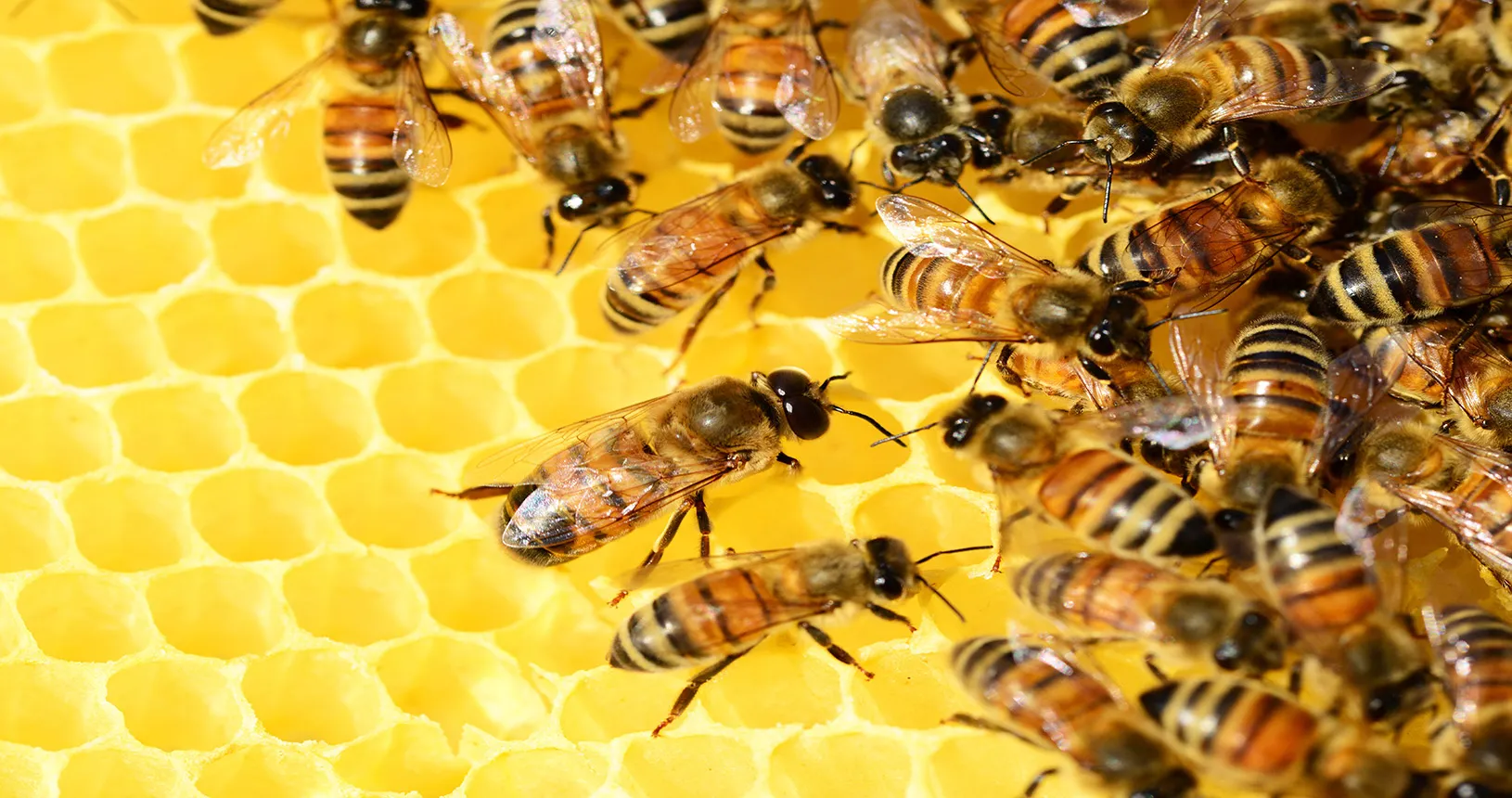
History
Honey or angbin, also referred to as "angvin", is a saccharine and viscous fluid that is cultivated by bees and certain other insects through the extraction of sugary secretions from plants and flowers, such as flower nectar, or the secretions of other insects aided by enzymatic processes. The process involves the evaporation of water, which is subsequently stored in wax formations known as beehives.The sweet taste of honey is derived from monosaccharides, specifically fructoses and glucose. The caloric content of honey amounts to approximately 325 kcal per 100 grams. Honey occupies the highest position among food items with regards to harboring fermented substances in food exchanges and facilitating digestion.Due to its unique acidity, minimal water content, and the presence of hydrogen peroxide, honey proves to be resistant to decomposition, thereby permitting convenient storage and transportation. However, honey poses a potential hazard for children below the age of two due to the production of botulinum toxin

Honey undergoes spontaneous sugaring over time, and this phenomenon is a natural process that exerts no influence on its chemical properties or overall quality. The application of hot water can successfully dissolve this sugar; however, it is important to acknowledge that subjecting honey to a temperature exceeding 40 degrees Celsius will result in the loss of its biologically active constituents.The vast majority of microorganisms are unable to proliferate in honey, rendering packaged honey impervious to spoilage even after the passage of countless years. Throughout history, ancient civilizations such as the Egyptians and Greeks utilized honey for the preservation of deceased individuals.

History of honey in Iran and the world
Beekeeping was prevalent in Iran during the Achaemenid era due to the utilization of honey in lieu of sugar. However, Iran, influenced by other nations in recent centuries, also acquires its sugar resources through the cultivation of sugarcane and sugar beet.The practice of beekeeping in Iran boasts an extensive chronicle and stands as one of the esteemed and age-old occupations of the Iranian people. This fact serves as evidence of the Iranians' longstanding familiarity with this invaluable insect.The inhabitants of Khansar firmly believe that beekeeping in their region dates back to no less than five centuries. The majority of Khansar's honey is crafted from the blossoms of turmeric, rendering it the most aromatic and delectable variety.The utilization of honey in Egypt can be traced back to the period between 2200 and 2600 BC. The ancient Egyptians employed honey in no fewer than 900 different products.Anecdotes inscribed in the temples and tombs of the deceased indicate that honey held a significant role in the lives of ancient Egyptians. It was deemed highly valuable during that era and was regularly prescribed to patients as a form of medicine. The ancient Egyptians concocted a blend of barley, honey, and wheat, employing it as a substitute for alcohol.A millennium ago, Abu Ali Sina included numerous prescriptions based on honey and beeswax in his compendium on law.Hippocrates, the esteemed father of medicine and founder of Greek medicine, proclaimed his reverence for honey 2,500 years ago, stating, "Every remedy is derived from sustenance, and every sustenance serves as a substitute for medicine. Honey fulfills both of these criteria."Maurice Merlink eloquently declared, "If bees were to be eradicated today, thousands of plant species would face extinction. Who is to say that civilization itself would not be imperiled?"

The most ancient bee fossil can be traced back to a period of twenty million years in the past, serving as a representation of the bee's defiance and ability to adapt to its surroundings. This remarkable specimen is currently housed within the esteemed New York Museum of Natural History.
The earliest known historical structure, which has been interpreted as evidence of humans harvesting honey, is believed to date back to approximately seven thousand years before the common era. This structure is associated with a tradition that has been observed for twelve thousand years within the caves of Bicorpaspania, known for their intricate paintings. The structure itself features a carved image of a man utilizing a tool to access a colony site, and a receptacle to store honey-filled sacks on his waist. Bees from the worker honey category are depicted flying around his head.
Within the Jewish religious text, there is mention of a Promised Land wherein streams of honey and milk flow abundantly.
In the Christian Bible, honey is referenced as a symbol of abundance and blessings, while the Dead Sea Scrolls also make mention of this sweet substance.
The ancient Greeks held the belief that gods achieved immortality and eternal life through the consumption of celestial sustenance. Furthermore, they regarded honey as one of the most vital components of this divine food. In the epic poems of Homer, honey is described within religious texts.
According to the customs and practices of ancient India and Egypt, honey was employed and a vessel containing honey was discovered within one of the Egyptian pyramids, which remains undamaged even after numerous millennia.
